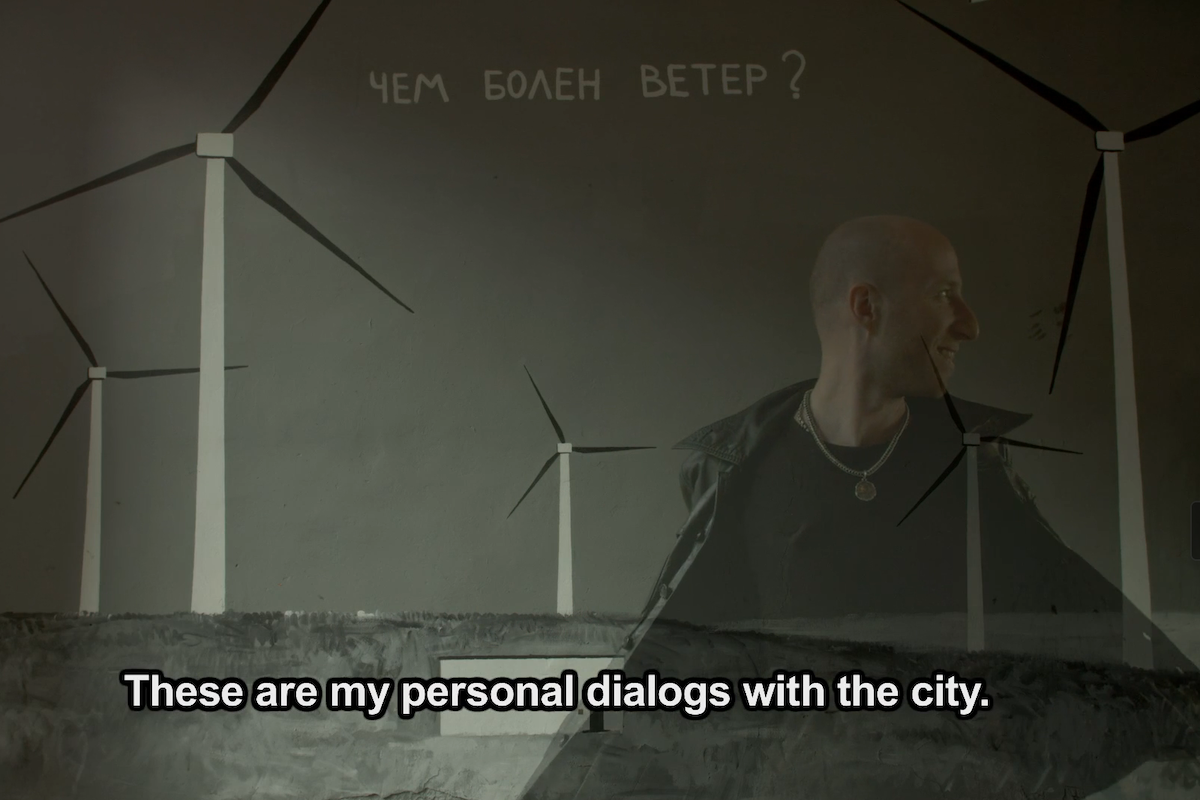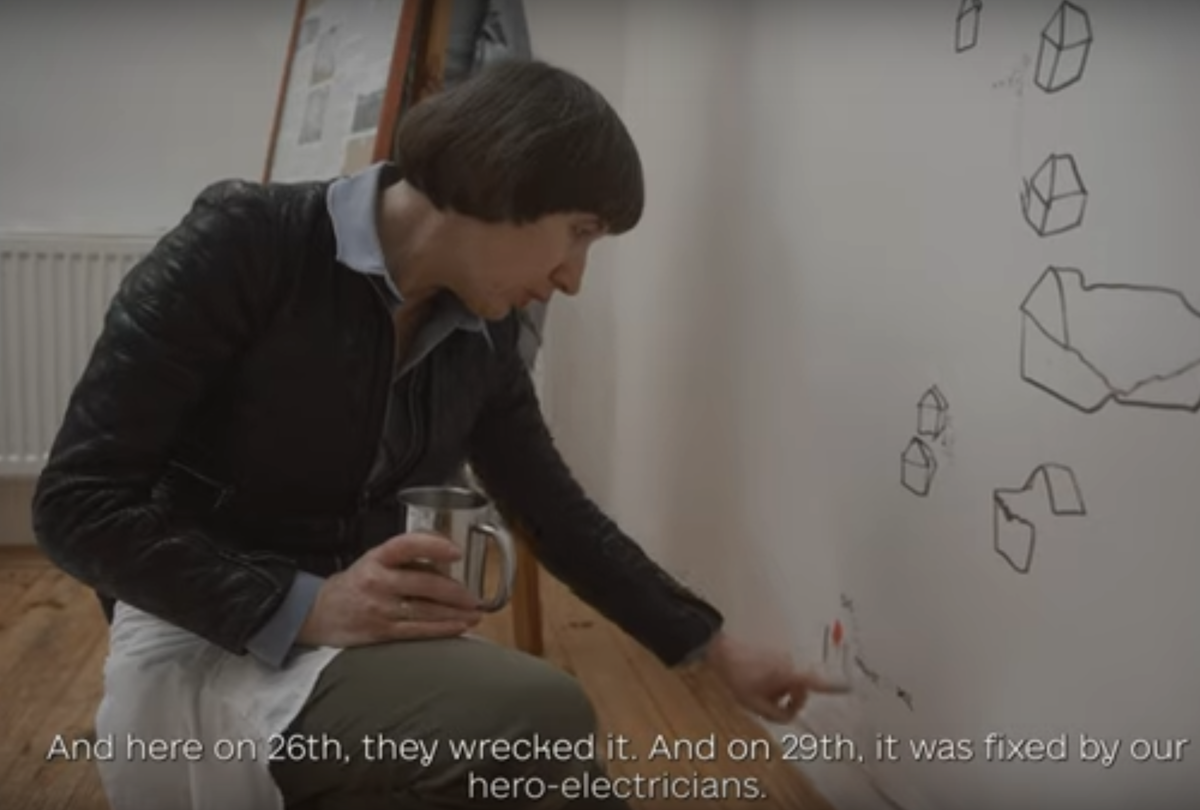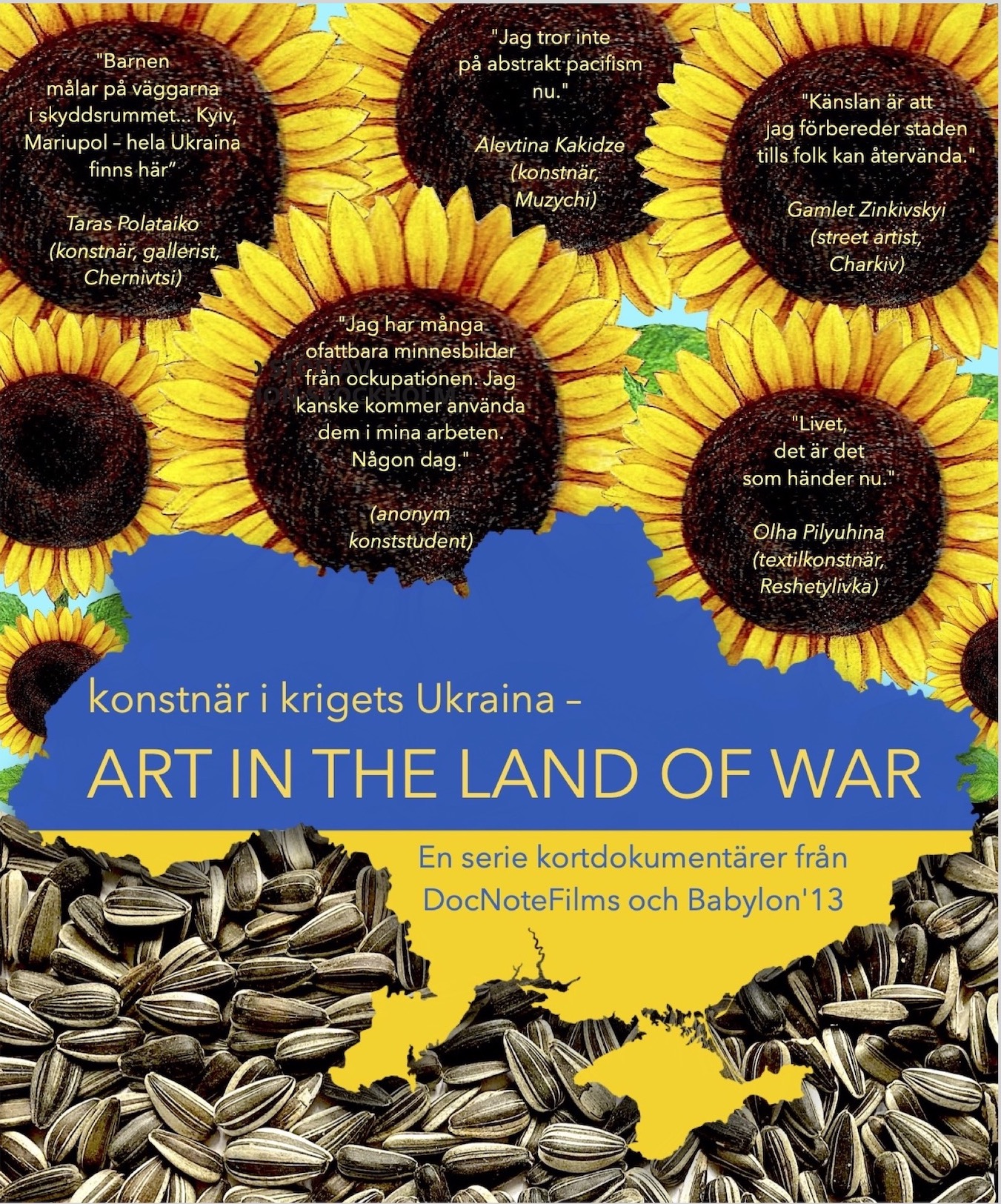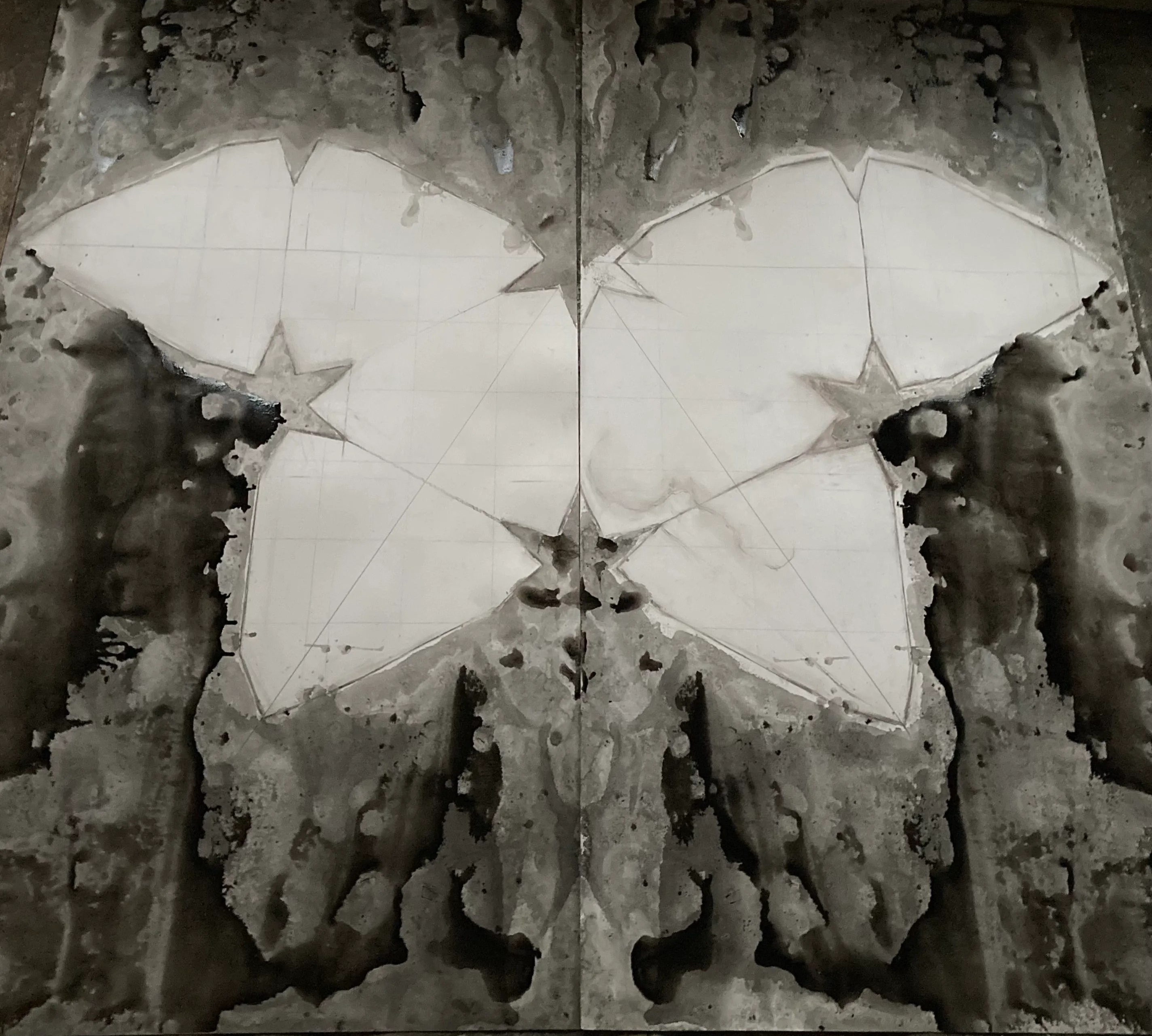What is the role of art when an entire country is fighting for its life? How is it even possible to create under the conditions of war? The common denominator, I think, is the strive for freedom.
To my understanding, freedom is one and indivisible – just like Spaceship Earth is one for all of us. To paraphrase Caribbean-American poet Audre Lorde: I am not free while any being is unfree.* In February 2022, when Russia’s prior war crime aggression and annexation turned into a full scale invasion of Ukrainian territory, it wasn’t only an eye-opener, but also a compelling urge to take action. How could I, as an artist, support the defenders of our freedom?
Staying in touch (since 2011) with Kyiv-based filmmaker Oleg Chorny, in combination with having a volunteer-run cinema just across the street, finally sparked the idea of organizing a film screening. When I contacted Stadsgårdsterminalen – one of Stockholm’s most creative spaces – the project kind of doubled… In the first months of 2023, I turned to Region Stockholm for funding; in June, my application was granted, and I could start organizing the two screening events. Independent production company DocNoteFilms gave me full access to their short film series Art in the Land of War – documentaries made in 2022-2023, following Ukrainian artists in their studios and workshops; in front of the screen or the loom; in the basement shelter or in the city streets… To pick a choice from the 25 movies wasn’t easy, but in the end ten were chosen to mirror the diversity of Ukrainian art and artists.

Local cinema Mölnbo Bio by night

Örjan from ‘Caps and Candles for Ukraine’

Painter Matvei Vaisberg, from the documentary by Oleg Chorny

Inna, outstanding singer of the band ‘Ukraina’

Painter Matvei Vaisberg, from the documentary by Oleg Chorny

Pelle the cinema technician

Introducing a movie
On September 23rd, the first screening event took place in rural village Mölnbo. Long-time local residents mingled with more recently settled Ukrainian refugees; home-made borsch and nalysnyky pancakes were served, artworks by Angela Ursol were on display and the band named Ukraina played. Örjan – representing local volunteer organization Caps and Candles for Ukraine – told us about his recent journey to Eastern Ukraine, where much-needed supplies reached its destinations. And the documentaries took us all along to Mariupol, Kyiv, Chernihiv, Muzychi, Poltava, Charkiv… to a number of artists at work – very diverse in personalities, age, genres and techniques, each one finding their own way in modalities of resistance.
During the following weeks, the next event was announced on walls in central Stockholm as well as online. Another batch of soup and nalysnyky were prepared, all details of the program were finally set, and planning proceeded with the super-helpful staff at Stadsgårdsterminalen. On Saturday, October 7th, volunteers and artists gathered in the morning to arrange everything… Visual artists Liubov Babichenko and Anastasiia Usenko contributed with their artworks, Tomas the technician got everything in order – and by noon, people began to drop in as the soundcheck of domra player Olga Kovalenko smoothly turned into a little concert.

‘Rex Tremendae Majestatis’ by Liubov Babichenko

The volunteer-run café attracted visitors

‘Les trois soeurs’ by Liubov Babichenko

Olga Kovalenko presenting her music

A glimpse of Anastasiia Usenko’s drawings
The screening program opened with two films that were made before 2022, and therefore weren’t part of the Art in the Land of War series: first, Derevo / The Tree – a portrait of a woodcarver, originally created by amateur filmmaker Victor Kyzyma in the 1970s. The faded and damaged remains of Kyzyma’s film were rediscovered in 2017, and brought back to life by contemporary filmmakers Oleg Chorny and Gennadiy Khmaruk; a dreamlike memory, reimagined. Next, Proekt Doschu/Rain Project took us to the city of Mariupol in 2016, to follow the work of street artist Gamlet Zinkivskyi – also known as ‘Ukraine’s Banksy’.

Still from ‘Derevo’ (2019)

Still from ‘Proekt Doschu’ (2016)
The program proceeded with the recent DocNoteFilms/Babylon’13 documentaries, shown two by two with a 30 minutes pause inbetween screenings. There were talks by artist Liubov Babichenko, and by Max Valentin – founder and producer at Fabel Kommunikation – who gave us insights from the Ukrainian cultural sector (especially, the changing role of public libraries). We also succeeded to make contact with director Hanna Iarosevych over link from Kyiv; a valuable exchange, as the audience could pose their questions directly to the filmmaker, who emphasized the blooming of contemporary Ukrainian cinema as a part of civil society.

Max Valentin on what to learn from Ukrainian civil society

Hanna Iarosevych live on screen

View from the backstage hangout

Our final treat was a work by Liubov Babichenko, produced especially for this event and with music by composer Roman Gens; archive documentary PAST SIMPLE – once more connecting with the past, speaking wordlessly about life in peace… projecting hope for the future.
Below, screenshots of some of the artists seen in the documentaries:

Street artist Gamlet Zinkivskyi

Conceptual artist Alevtina Kakidze

Conceptual artist Taras Polataiko

Artist and activist Oleksiy Sai

Anonymous art student

Nina Savenko, printmaker at print workshop Lithography30

Composer Alexander Shchetynsky with colleague at the Kharkiv National Kotlyarevsky University of Arts

Tapestry weaver Olha Pilyuhina

Sculptor Svitlana Karunska
*original quote by Audre Lorde: “I am not free while any woman is unfree.”



























 Photo credit: NASA / restoration by Toby Ord
Photo credit: NASA / restoration by Toby Ord 


























































